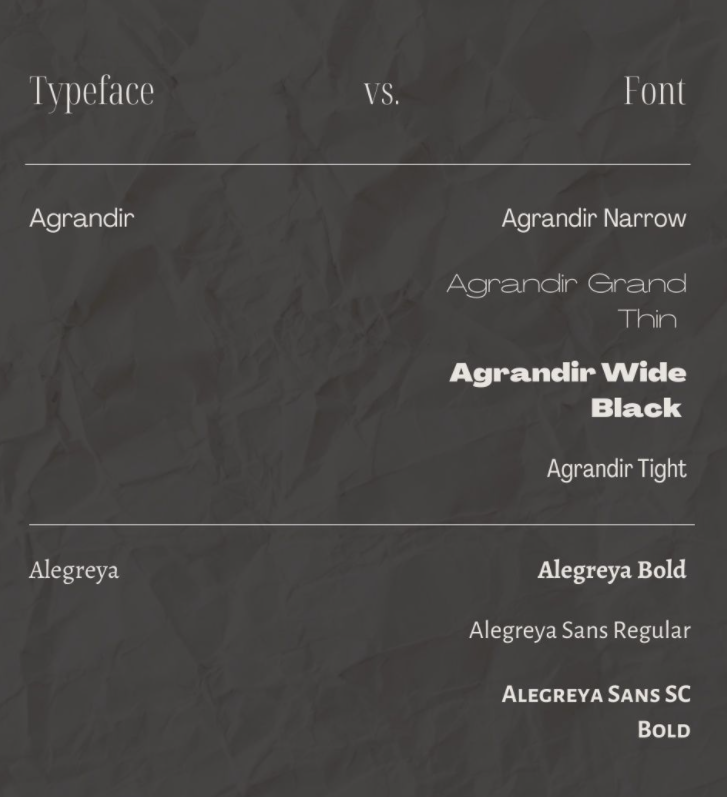Typeface vs. Font
When it comes to design and typography, the terms "typeface" and "font" are often used interchangeably, but they actually refer to different things. Let's clear up the confusion.
A typeface is like a family of fonts. It's a collection of letters, numbers, and symbols that share a consistent design style. Think of it as the overall look and feel of the text, including its weight, style, and appearance. For example, Times New Roman, Helvetica, and Arial are all different typefaces.
On the other hand, a font is a specific variation within a typeface family. It's a single style or variation of the typeface, such as bold, italic, or regular. Each font within a typeface has its own unique characteristics, but they all belong to the same family. So, for example, Times New Roman Regular, Times New Roman Bold, and Times New Roman Italic are all different fonts within the Times New Roman typeface.
To put it simply, a typeface is the overall design concept, while a font is a specific implementation of that concept. Imagine the typeface as a parent and the fonts as its children – each font inherits certain traits from the typeface, but they also have their own distinct features.
Understanding the difference between typeface and font is important for designers, as it allows them to communicate more effectively and make informed design choices. When selecting typography for a project, designers consider both the typeface – to establish the overall tone and style – and the fonts – to create emphasis, hierarchy, and visual interest.
In summary, while "typeface" and "font" are often used interchangeably, they refer to different aspects of typography. The typeface is the overarching design concept, while the font is a specific variation or style within that concept. By understanding this distinction, designers can create more cohesive and visually appealing designs.
Below you can find a few more examples.


